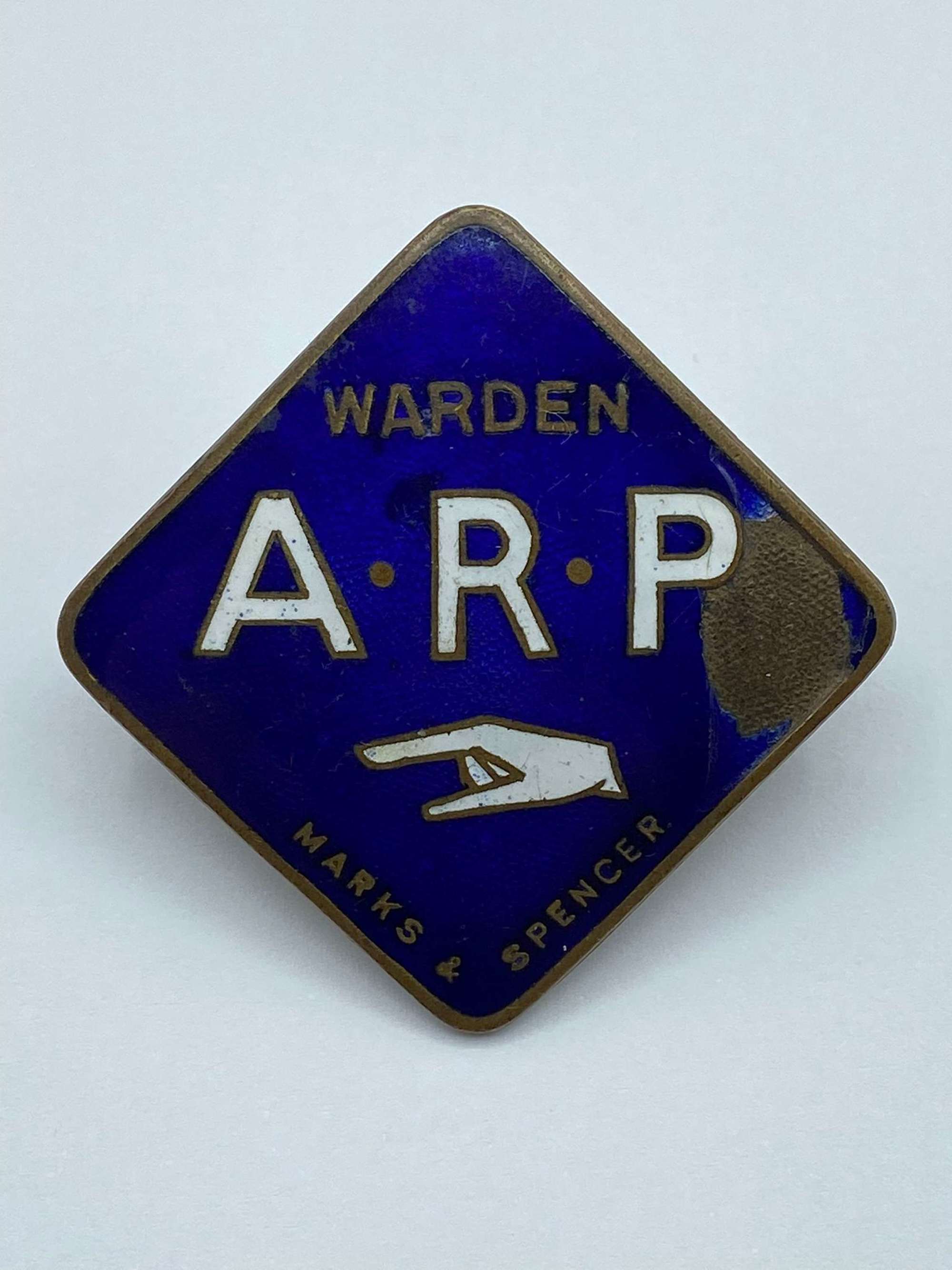WW2 British Home Front Marks & Spencer Air Raid Precaution ARP Badge
Delivery Quote Request
Please fill in the form below to request a delivery quote from Atlas Antiques.
Contact Atlas Antiques
 Dorset, United Kingdom
Dorset, United Kingdom
Simply fill in the below form to get in touch with Atlas Antiques regarding this item.
About this item
For sale is a Rare WW2 British Home Front Marks & Spencer Air Raid Precaution ARP Badge Manufactured by L Simpson & Co London.
About Marks & Spencer During Wartime: The 1930s was a period of huge expansion for M&S. Their product range had grown throughout the 1920s and they started selling clothing in 1926. This meant that they needed larger stores. Between 1926 and 1939 165 new stores were built and old stores extended. At the start of the war there were 234 M&S stores. At the 1939 Annual General Meeting it was reported that profits were up by 11% on 1938, but war was on the horizon. An Air Raid Precautions (ARP) Officer, Ralph Salaman, had been appointed in March 1938. Staff had been trained in anti-gas precautions, as wardens or firefighters, and encouraged to join the Territorial Army with paid leave for training. The outbreak of war on Sunday 3rd September 1939 is recorded in the diary of Mr Rogers, from Eltham store. It says: ‘War declared, sirens went’. Staff were issued with these beautifully designed badges according to their ARP role. Due to the high numbers of male employees now deployed in the armed forces, chief ARP positions were often filled by women. M&S ARP wardens were responsible for re-assembling staff after air-raids, and for the welfare of staff and customers during those raids. They would make sure people were well away from windows, skylights and doors that could shower shattered glass. A blast-proof shelter was built at every M&S store, and tin helmets were purchased in bulk to protect all staff. Head of ARP Ralph Salaman organised the ‘Chain Gang’, which was a group of retailers who agreed to share staff canteens and rest rooms if any of their properties were damaged by bombing. The group included M&S, Woolworths, British Home Stores, Boots and Lyons. By 1945, 1500 of the 2000 men employed by M&S were serving in the armed forces. To keep in touch, the Forces Bulletin was sent to all serving colleagues. Starting in January 1944, it gave news on the business and of staff being injured, captured, killed or awarded medals. In the final edition of June 1946, editor Frank Ross wrote, ‘The Bulletin has made many journeys to all parts of the world, to men serving on all battle fronts, and in many very remote places. It has travelled by air, land and sea, and has on occasions been dropped by parachute mail… Our only regret was that we could not despatch it to the POW camps.’ The Personnel department also wrote to employees stationed abroad and to those in POW camps, many sent letters and cards back. Some of these are held in the collection in an album of Christmas cards from 1944. Service pay was subsidised by M&S, topping up armed forces rates of pay to match pre-war civilian salaries. The Personnel department saw itself as a shock absorber for employees between military and civilian life. Where possible, staff were given roles in locations that they specifically requested on their return to help with rehabilitation. A major challenge for M&S was a shortage of trained and skilled staff, because so many were serving with the armed forces or civilian defence services. In September 1939 the business had 20,700 employees, by mid-1943 only 11,000. At the start of the war, there were 463 male trainee managers – four years later there were 17. The answer was promotion of women. At a store managers’ meeting in May 1940, Head of Personnel Frank Ross, said ‘Already we have 50 potential manageresses and 120 girls have been nominated as potential assistant managers’. This badge unfortunately had some enamel damage which can be seen in the photos for more details. This will be sent via Royal Mail special delivery and dispatched the next working day.Additional Information
![]() Dorset, United Kingdom
Dorset, United Kingdom
Atlas Antiques Promises You - Fresh stock weekly - Fair & affordable prices - Everything listed is original, money back guaranteed. (Unless marked fantasy or reproduction). - Fast responses and delivery's made within 2-3 working days. Atlas Antiques only handles items in terms of...






















